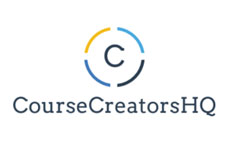
By Morgan Timm of Teachable
Creating your course curriculum can be a foreign process for those who are good at what you do, but have never been in a “teacher” position.
You’re an expert in your field, you could do what it is you’re trying to teach in your sleep, but when it comes to actually creating your curriculum, you keep getting stuck.
Luckily, the process for creating your course curriculum is relatively simple. We broke it down into six easy steps so you can quickly create a curriculum that’s logical and easy to follow.
If you’re already set on what you want to teach and you’re 100% it’s the course your audience wants you to make, skip to step 3. If you’re still a little wishy-washy on what exactly it is that you want to teach, start here.
Identifying your outcome
When it comes down to it, online courses are simply a shortcut to an outcome. You’re providing your students with the education and resources that they need in order to be successful within your course topic.
If your course isn’t solving a specific problem, it’s not going to be nearly as successful as an online course that solves a specific pain point for your audience.
Which brings us to step one.
Step 1. Identifying your target audience
Before you can create a course that blows your audience’s mind and transforms their lives, you have to determine who your audience is.
To get started identifying your target audience, ask yourself a few questions:
- What group do you understand better than anyone else?
- What do you care most deeply about?
- Is there a specific community that could truly benefit from your knowledge? A group that you’re part of that you deeply understand?
From there, get nitty gritty.
If your gut instinct was, “my audience is bloggers,” dig a little deeper. Is it anyone who is a blogger?
The answer is likely no. Maybe your target audience is really women in college who want to turn their blogs into a full-time career.
If you already have a sizeable audience, you could also ask them who they are. Send a survey out to your email list with a few questions that help you better understand their struggles. Here are a few examples to get you started:
- What are your goals with your blog?
- In what ways are you already monetizing your blog?
- How much do you earn from your blog on a monthly basis?
You can offer your audience a chance to answer anonymously, just make sure to ask a few demographic questions to help you sort through outliers.
Step 2. Poll your audience
The best way to determine how you can help your audience is by actually asking what they’re struggling with.
If you already have a responsive audience, you can include this question in the demographic poll we mentioned in step one, if you don’t, you’ll have to get a bit more creative.
Here are a few strategies for polling your audience and determining their struggles:
- Send an email
- Create polls in Instagram stories
- Post in Facebook groups where your audience hangs out
- Post in subreddits your audience frequents
- Ask them in the caption of your Instagram stories
- Write a blog post and make the CTA a question asking your readers about their struggles
- Schedule discovery calls with a handful of audience members
Once you’ve polled your audience, look for consistencies. What are the the trends? Is there a common theme? Make a list of the common pain points your audience is experiencing.
Step 3: Determine your outcome
Here’s where the ball really gets rolling. Once you’ve got your list of pain points, narrow it down to the 2 or 3 most popular. Take a look at what’s left and decide which one you 1. Have the most authority to teach and 2. Would be most interested in teaching.
From there, you craft your outcome.
Let’s pretend that your audience was really struggling with how to go from earning a few hundred dollars a month from their blog to making a full-time income.
You could take that information and decide that you’re going to teach your students how to 5x their blog revenue. In this pretend scenario, you know this is possible because it’s something that you have done yourself and you’ve seen your strategies work for other people, too.
Creating a curriculum that leads your students to an outcome
Now that we know what your outcome is, we can craft a curriculum that when followed closely, will allow your students the same successes you’ve had.
Step 4: Working backward
What are all the things your students need to know to achieve the outcome we decided on above? We’re going to start from where you currently are and work backward thinking about everything you did from the time you were in your students’ shoes until now.
Following along with our full-time blogger example, that list might look a little something like this:
- Joined more blogging networks
- Created a membership site for blog readers
- Added new sidebar ads to your site
- Inserted affiliate links into your old posts
- Reached out to 5 new PR companies each week
- Redetermined your rates for sponsorships
- Created a series of ebooks to sell on your site
- Took on blog coaching clients
In short, you need to list out every single step you took to get to the place you are now, no matter how insignificant.
Step 5: Group key steps into lessons
Now that you’ve got a list of every step one would need to take to reach your intended transformation, group like steps where logical.
Pulling from the example list above, I’d group joining blogging networks, reaching out to PR companies, and determining a rate for sponsorships into a lesson called “Working with brands.”
You might find that some of the steps you walked through deserve to be standalone lessons and can’t be grouped with any other steps, while other steps might be bundled with 5 or 6 others. The goal is to create 5-10 easy to follow lessons. It’s important to keep in mind that people might not consume your course all at once and they may jump around a lot. You want to make it as easy as possible for them to find each of your lectures.
Organize your lectures in the way you see most logical. Depending on your niche, this will vary. If I were creating a blogging course, though, I’d put the most simple/easy to execute lessons first to give my students easy wins and then work up to the more time consuming and difficult monetization strategies.
Step 6: Break your lessons into lectures
It’s common for each lesson to have a handful of lectures within it. Again, this will make your course more easily navigable and help your students consume your course in a logical way.
When determining what your lectures will be, make a goal of keeping all of your videos under 10 minutes. In most cases, it’s better to have a handful of short video than it is to jam all of the information into one 30 minute video.
Of course, all good rules are made to be broken, and there are exceptions. For example, if you’re teaching an art course and doing a Bob Ross style “paint with me,” it’d be more logical for that to be one long video.
Again, organize your lectures within your lessons as you see fit. Some courses will have very obvious organization, while others are going to be based on your gut more than anything else.
Voila!
You’ve created your online course curriculum, and now you can begin to create course content.
About the Author
 Morgan Timm is a content marketer at Teachable with a background in blogging and social media. She runs Mostly Morgan, a life and style blog that reaches an audience of 40,000 people monthly.
Morgan Timm is a content marketer at Teachable with a background in blogging and social media. She runs Mostly Morgan, a life and style blog that reaches an audience of 40,000 people monthly.
Now Take Action
Get registered for the 7 Steps to Launch Your Own Online Course webinar from Teachable.
In this free live training, you’ll discover the easiest way to create your own online school and set up your first course using Teachable. Save Your Spot Here.
